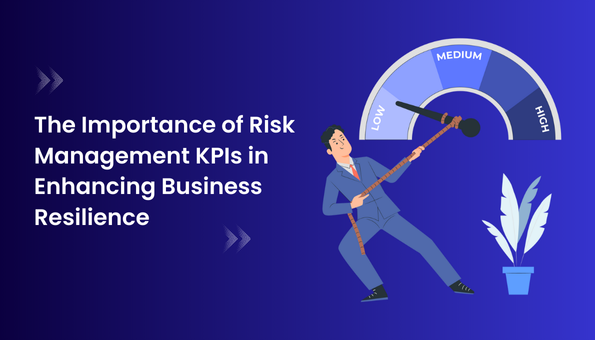Why the Importance of Risk Management Cannot Be Overlooked in Today’s Economy
Why the Importance of Risk Management Cannot Be Overlooked in Today’s Economy
Blog Article
Discovering the Importance of Risk Management for Effective Decision-Making Methods
In the elaborate globe of organization, Risk Management emerges as a critical consider the decision-making process. The capability to identify potential hazards and possibilities, and strategize appropriately, can spell the difference in between success and failure. With tools such as SWOT and PESTEL, organizations are geared up to make educated choices, cultivating resilience and versatility in an ever-changing atmosphere. Wondering just how this functions? Let's unbox the dynamics better.
Recognizing the Concept of Risk Management
Risk Management, a critical part in decision-making, is commonly misconstrued or oversimplified. Risk Management includes structured and disciplined strategies, making use of information and insightful analyses. From financial unpredictabilities, legal responsibilities, critical Management errors, to mishaps and natural disasters, it addresses various dangers - importance of risk management.
The Duty of Risk Management in Decision-Making Processes
In the realm of calculated preparation and business operations, Risk Management plays an essential function in decision-making procedures. Risk Management hence becomes a crucial tool in decision-making, assisting leaders to make educated choices based on a detailed understanding of the threats entailed. Risk Management offers as a crucial component in the decision-making procedures of any type of company.
Exactly How Risk Management Boosts Strategic Preparation
In the context of calculated planning, Risk Management plays a critical role. Starting with the recognition of prospective dangers, it better reaches the implementation of Risk reduction actions. The duty of Risk Management is vibrant however not static, as it requires consistent tracking and adjusting of techniques.
Determining Possible Risks

Carrying Out Risk Mitigation
Having established the importance of recognizing prospective risks, the next action is to explore Risk reduction. This procedure includes developing and carrying out strategies to manage recognized dangers efficiently. It is a vital aspect of strategic planning as it boosts decision-making by minimizing potential negative results. Risk mitigation methods can range from Risk avoidance, Risk transfer, to risk decrease. Each technique must be tailored to the particular Risk, considering its this potential effect and the company's Risk tolerance. Reliable Risk mitigation calls for a deep understanding of the Risk landscape and the possible impact of each Risk. This understanding enables companies to focus on threats and assign resources efficiently, making sure that the most significant threats are dealt with first.
Tracking and Adjusting Techniques
Though Risk reduction is a critical action in critical preparation, constant surveillance and adjustment of these techniques is just as crucial. This ongoing process enables organizations to determine new threats and reassess existing ones, guaranteeing the carried out approaches remain efficient in the ever-changing business setting. It also provides an opportunity to review the success of the Risk Management actions, permitting adjustments to be made where required, more enhancing critical preparation. Reliable tracking and change call for using analytics and essential performance indications (KPIs) to measure effectiveness. These devices supply useful data-driven insights that can notify critical decision-making. For that reason, monitoring and changing Risk Management methods is a critical component for improving check my source an organization's strength and tactical preparation.
Situation Studies: Successful Risk Management and Decision-Making
In the globe of business and finance, effective Risk Management and decision-making commonly serve as the columns of thriving enterprises. These instances highlight the value of sharp Risk Management in decision-making processes. These instances emphasize the essential function of Risk Management in tactical decision-making.
Devices and Strategies for Effective Risk Management
Navigating the elaborate puzzle of Risk Management calls for the appropriate set of devices and techniques. These devices, such you could check here as Risk signs up and warmth maps, help in recognizing and examining potential threats. Techniques include both measurable methods, like sensitivity analysis, and qualitative techniques, such as SWOT evaluation. These assistance in prioritizing dangers based on their potential influence and possibility. Risk feedback strategies, a crucial component of Risk Management, include accepting, avoiding, moving, or mitigating dangers. Surveillance and managing threats, via routine audits and evaluations, make certain that the strategies stay efficient. With these strategies and devices, decision-makers can browse the complicated landscape of Risk Management, thus assisting in informed and effective decision-making.
Future Patterns in Risk Management and Decision-Making Approaches
As we discover the huge landscape of Risk Management, it ends up being obvious that the tools and techniques made use of today will continue to develop. The idea of Risk culture, where every participant of a company is mindful and involved in Risk Management, will certainly get a lot more prestige. These trends proclaim a more aggressive and inclusive strategy towards Risk Management and decision-making.
Verdict

Risk Management hence ends up being an essential device in decision-making, aiding leaders to make educated options based on an extensive understanding of the dangers involved. Risk reduction methods can range from Risk evasion, Risk transfer, to take the chance of decrease (importance of risk management). Effective Risk mitigation requires a deep understanding of the Risk landscape and the potential impact of each Risk. Risk action techniques, an essential part of Risk Management, involve approving, preventing, transferring, or mitigating threats. The concept of Risk culture, where every participant of a company is mindful and included in Risk Management, will certainly get extra prestige
Report this page